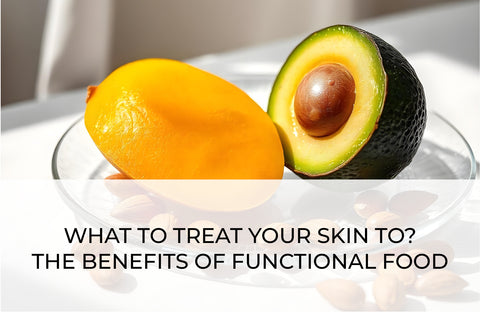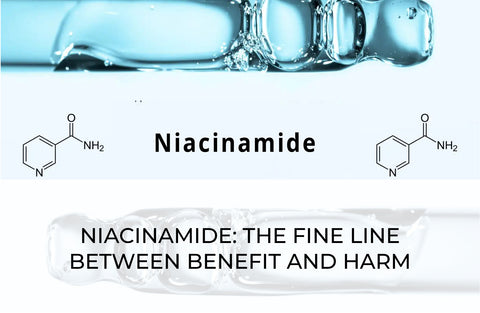DIGESTIVE ENZYMES: HIDDEN AGENTS OF AGING

Gastrointestinal perforation
Digestive enzymes such as proteases, lipases, and amylases play a key role in breaking down food into digestible molecules in the gastrointestinal tract. However, in certain conditions, such as increased intestinal barrier permeability or systemic inflammatory processes, these enzymes can penetrate the intestinal wall and enter the systemic bloodstream — this condition is known as gastrointestinal perforation [1, 2].
Damage or dysfunction of the intestinal epithelium can impair its barrier function. This can be caused by various factors such as chronic stress, unbalanced diet, infections, or consumption of toxic substances [3]. As a result, digestive enzymes can penetrate between epithelial cells through so-called tight junctions, limiting their migration under normal conditions [4].
Researchers from the Department of Bioengineering at the University of California, San Diego, have attempted to understand how digestive enzymes move from the gut into the systemic bloodstream and how they can damage various tissues, contributing to aging. Their study involved animal models and advanced techniques, including immunohistochemistry and molecular biological assays, to track enzymatic activity in the body [5].
The study results showed that certain conditions, such as inflammation or impaired intestinal barrier function, promote the leakage of digestive enzymes into the bloodstream. Subsequently, these enzymes can cause damage to cell membranes and matrix proteins, contributing to tissue aging [6, 7]. Proteases such as trypsin and chymotrypsin can cleave cell membrane proteins, which can cause cellular damage and inflammatory responses in tissues not targeted by these enzymes [8]. This can lead to chronic inflammation, destruction of extracellular matrix, and damage to vascular walls, accelerating aging [9].
The relationship between gastrointestinal perforation and inflammaging
Inflammaging, which combines inflammation and aging, describes chronic low-grade inflammation in older adults. This phenomenon is associated with several factors, including age-related changes in the immune system, accumulation of cells with damaged DNA, and increased oxidative stress. A growing body of research has recently emphasized the link between gastrointestinal perforation and inflammation.
Gastrointestinal perforation increases intestinal wall permeability, allowing pathogens, toxins, and potentially harmful molecules to enter the systemic bloodstream [10]. This leads to the activation of the immune system and consequently to the production of pro-inflammatory cytokines such as interleukin-6 (IL-6) and tumor necrosis factor-alpha (TNF-α), which play a key role in the inflammatory process [11]. Elevated levels of these cytokines in the blood can cause systemic inflammation, associated with accelerated aging and poorer health. Chronic inflammation can lead to tissue degradation and increased risk for a host of age-related diseases, including cardiovascular disease, diabetes, and neurodegenerative diseases [12]. There is also evidence that the gut microbiota may significantly impact the development of inflammation. Changes in the microbiota composition caused by impaired intestinal barrier function may exacerbate inflammatory responses, contributing to further deterioration of the condition [13].
The common factors linking gastrointestinal perforation and inflammation indicate the need for comprehensive strategies to maintain gut health and control chronic inflammation. Improving the microbiota, maintaining the integrity of the intestinal barrier, and implementing a diet that reduces inflammation may help slow down inflammation and aging.
Conclusion
This study's practical value lies in the possibility of developing new strategies to prevent age-related diseases. Maintaining a healthy intestinal barrier and minimizing inflammation may be key factors in preventing premature aging due to the overactivity of digestive enzymes. Nutritional and lifestyle programs to strengthen the intestinal barrier and reduce systemic inflammation may help slow the aging process and improve quality of life [14, 15].
The association between gastrointestinal perforation and inflammation emphasizes the need for a comprehensive approach to preventing and treating diseases associated with aging. Maintaining a healthy intestinal barrier and controlling inflammation can significantly impact overall longevity and quality of life.
References
- Fasano A. Zonulin, regulation of tight junctions, and autoimmune diseases. Ann N Y Acad Sci. 2012; 1258: 25–33.
- Sampson T.R., Mazmanian S.K.. Control of brain development, function, and behavior by microbiome. Cell. 2015; 161(2): 264–276.
- Bischoff S.C. 'Gut health': a new objective in medicine? BMC Med. 2011; 9: 24.
- Suzuki T. Regulation of intestinal epithelial permeability by tight junctions. Cell Mol Life Sci. 2013; 70(4): 631–659.
- DeLano F.A,. Schmid-Schönbein G.W.. Aging by autodigestion. PLoS One. 2024; 19(10): e0312149.
- Gecse K., Roka R., Ferrier L. et al. Increased fecal serine protease activity in diarrhoeic IBS patients: a colonic lumenal factor impairing colonic permeability and sensitivity. Gut. 2008; 57(5): 591–599.
- Targosz A., Szczyrk U., Pietrzyk B. et al. Role of conventional protease-activated receptors and beta1-integrin in chronic stress-induced experimental colitis in mice. J Physiol Pharmacol. 2018; 69(2): 305–317.
- Acosta-Rodriguez V., Rijo-Ferreira F., Izumo M. et al. Circadian alignment of early onset caloric restriction promotes longevity in male C57BL/6J mice. Science. 2022; 376(6598): 1192–1202.
- O'Flaherty S., Klaenhammer T.R.. Probiotic bacteria influence the composition and function of the intestinal microbiota. Interdiscip Perspect Infect Dis. 2010; 2010: 686025.
- Rinninella E., Cintoni M., Raoul P. et al. Food components and dietary patterns: an overview. Int J Environ Res Public Health. 2019; 16(17): 3165.
- O'Keefe S.J.. Nutrition and gastrointestinal disease. Clin Gastroenterol Hepatol. 2014; 12(9): 1592–1601.
- Calder P.C. Feeding the immune system. Proc Nutr Soc. 2013; 72(3): 299–309.
- Franceschi C., Campisi J. Chronic inflammation (inflammaging) and its potential contribution to age-associated diseases. Journals of Gerontology: Series A. 2014; 69(Suppl 1): S4–S9.
- Bäckhed F., Roswall J., Peng Y. et al. Dynamics and stabilization of the human gut microbiome during the first year of life. Cell Host Microbe. 2015; 17(5): 690–703.
- Ling Z., Liu X., Cheng Y. et al. Gut microbiota and aging. Crit Rev Food Sci Nutr. 2022; 62(13): 3509–3534.



































